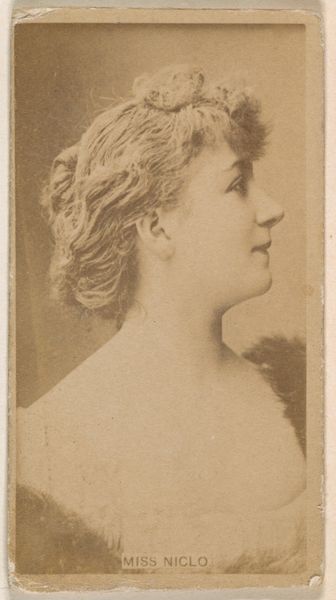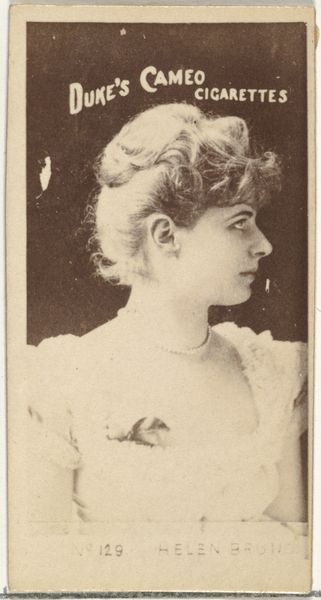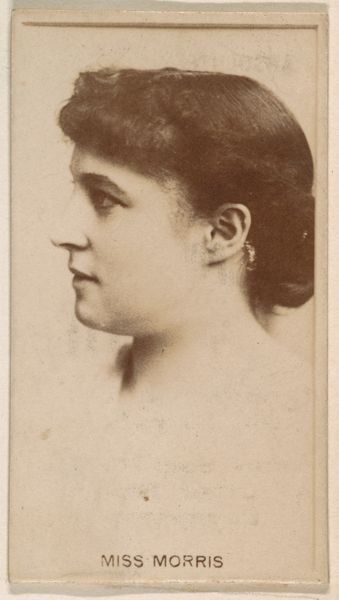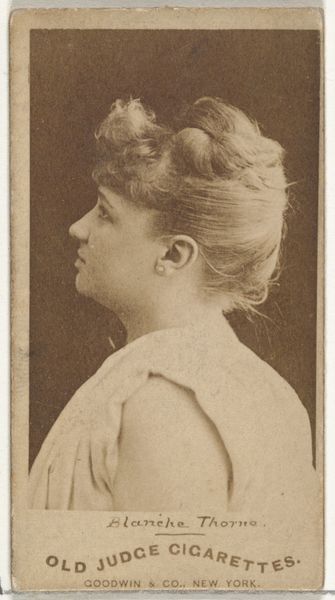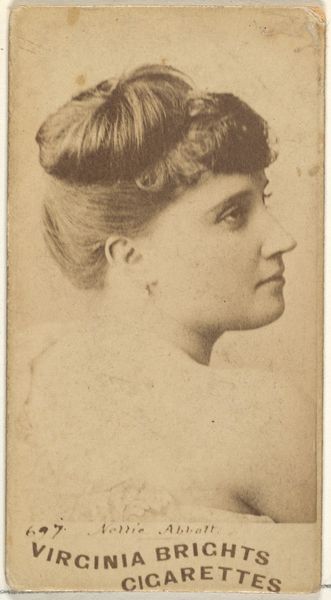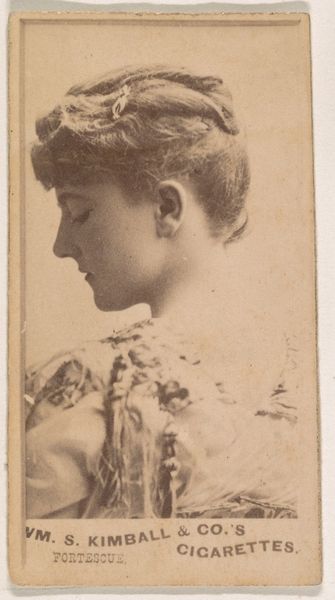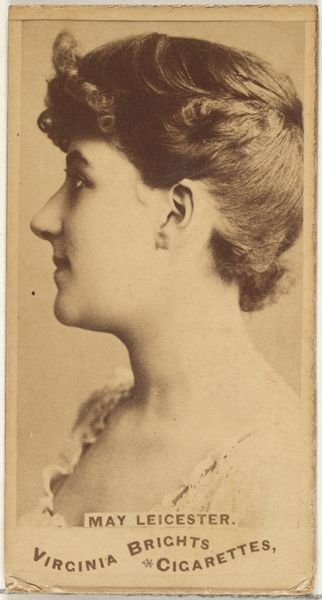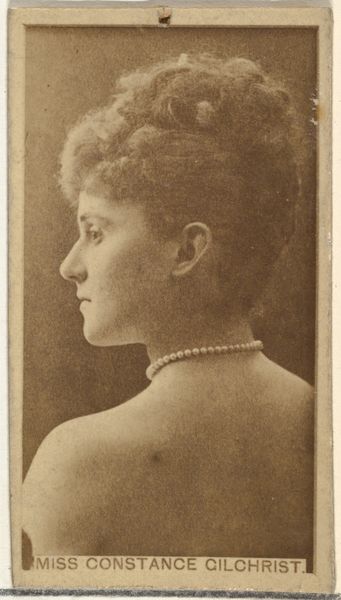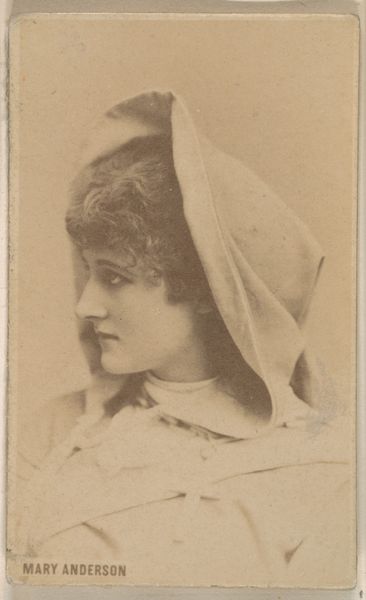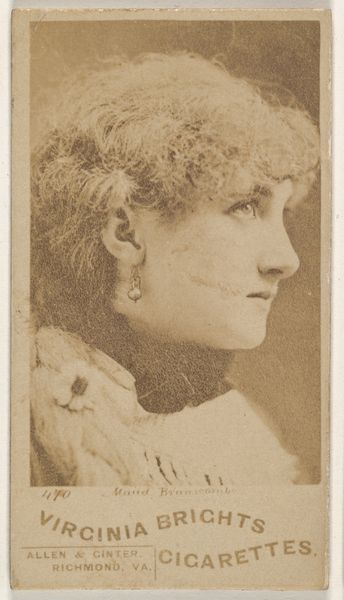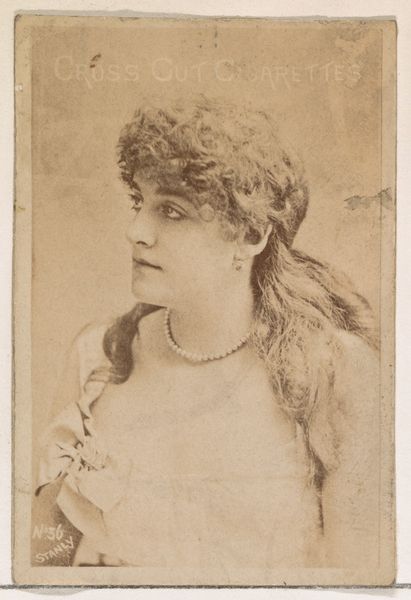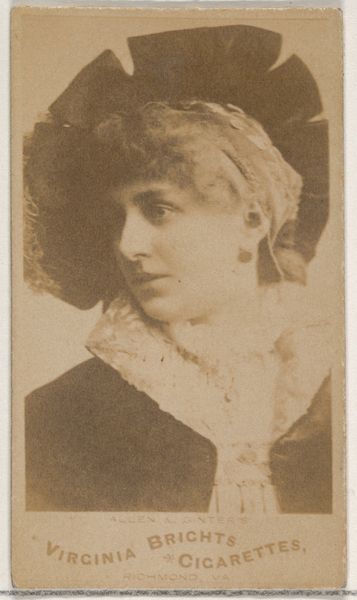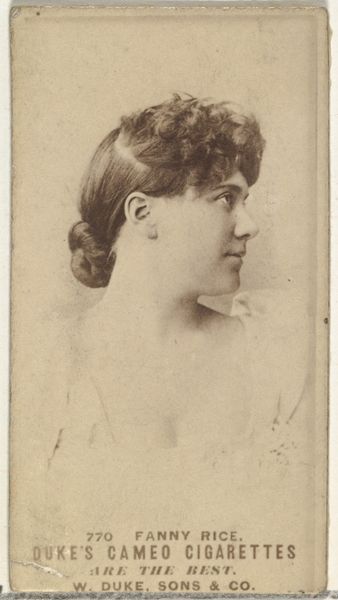
Ellaline Terriss, from the Actresses series (N245) issued by Kinney Brothers to promote Sweet Caporal Cigarettes 1890
0:00
0:00
drawing, print, photography
#
portrait
#
drawing
# print
#
photography
Dimensions: Sheet: 2 1/2 × 1 7/16 in. (6.4 × 3.7 cm)
Copyright: Public Domain
Curator: Before us, we have "Ellaline Terriss, from the Actresses series (N245) issued by Kinney Brothers to promote Sweet Caporal Cigarettes," dating back to 1890. The photograph is a print, part of a series commissioned by a tobacco company. Editor: It has an incredibly fragile quality. The faded sepia tones lend a sense of gentle melancholy. She almost seems to be emerging from a forgotten era, the edges of the card contribute to this sense that we are dealing with a token from another time. Curator: Tokens they were! Consider this: it’s not just an image, but also part of a highly calculated commercial venture. Kinney Brothers used these "actress series" cards—miniature portraits—to incentivize sales of Sweet Caporal Cigarettes. It prompts a deeper examination of consumer culture, marketing, and celebrity at the end of the 19th century. Editor: Right, and how these images, seemingly innocent, were actually fueling capitalist enterprise. Think about Ellaline Terriss herself – beyond a pretty face, she was an extremely well-known celebrity. Her inclusion suggests the complex intersection of celebrity endorsement, gender, and consumption, constructing ideals around femininity and fame that further solidified women's roles in consumer society. What implications did this commodification of female figures have, perpetuating what norms and expectations? Curator: Indeed. The industrial printing processes, the availability of these cards to a wider audience…these elements challenge established concepts about “art” itself. This small print was made using photo-printing processes, demonstrating the democratizing and commercializing influences of technologies. Were these items meant for collections, albums, trades? How were they regarded? Editor: Exactly. They moved between different forms of capital, they were not purely commercial, or simply tokens of admiration, rather their material status changed depending on social contexts of gender, race, and class and reveal much about societal structures Curator: Precisely! It shifts our focus to considering labor practices, material consumption, and print circulation rather than high art production of this era. It speaks volumes about its socio-economic structure. Editor: This work makes one think of the women obscured from history in many respects and to look at such tokens can help to rethink issues relating to gender, work and societal expectation of their place within industrial societies Curator: Looking closer makes us contemplate about the impact of mass-produced imagery upon constructing desire and normalizing expectations and to examine not only artistic vision but industrial networks as well. Editor: It invites inquiry into societal hierarchies and inequalities during that era by linking artistry, marketing, gender, and celebrity!
Comments
No comments
Be the first to comment and join the conversation on the ultimate creative platform.
